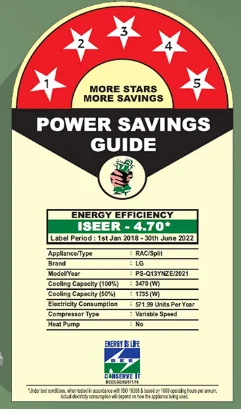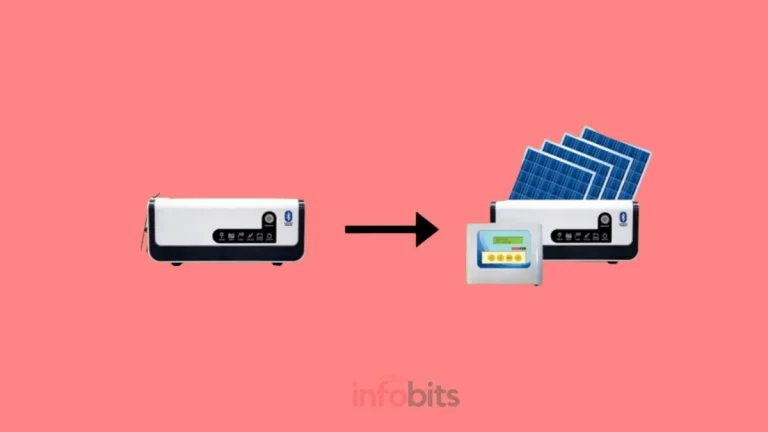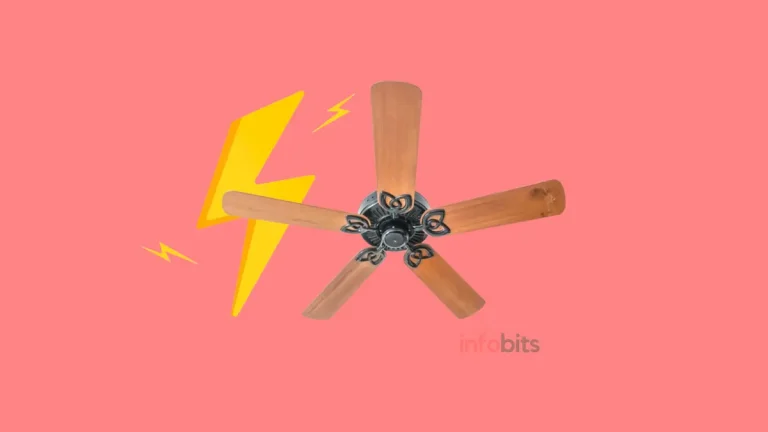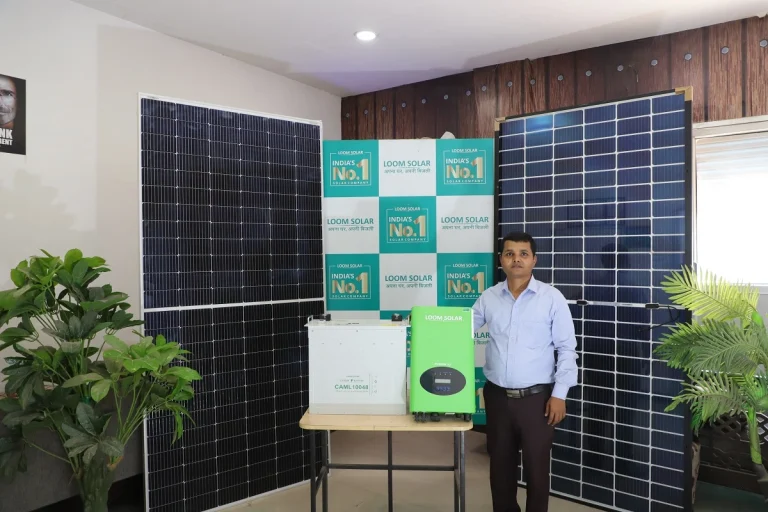How to Calculate the Power Consumption of an AC?
Air conditioners are a must-have piece of equipment in most homes. In the summer, they circulate cold air throughout the house to maintain a comfortable temperature.
Many people are concerned about the power consumption of an AC or AC electricity bill when they consider installing an air conditioner.
It will be easier to plan your budget if you understand how much electricity an air conditioner consumes under normal conditions.
As a result, many readers inquire about how to determine the power consumption of an air conditioner, as well as how much their energy bill will be if an air conditioner is used for at least 4 hours per day.
If you’re thinking these things, you’ve come to the right place. In this post, we’ll look at how much power an air conditioner consumes and what is AC bill for electricity, whether it’s a one-ton, two-ton, or three-ton unit.
We also provide some helpful tips on how to reduce the power consumption of your air conditioner and save money on your utility bill.
1. Calculate an AC’s Power Consumption Based on Its Label
Most modern air conditioners in India come with an energy efficiency label, as shown below. This energy-saving label on your air conditioner is the most straightforward way to assess AC power consumption.
The yearly power consumption for your air conditioner can be found on this rating label We looked at the energy efficiency label for an LG 1 Ton 5 Star AI DUAL Inverter Split AC here.

According to the label, the yearly power consumption of this 1-tonne AC is 571.99 kWh. This figure is based on a test scenario with 1600 operational hours per year.
This works out to 4.5 hours of operation per day and 133.33 hours per month, which is the average daily operation time for most residences.
The actual number will be higher due to higher outside temperatures than testing conditions and the poor use of air conditioners.
If you’re in the market for a new air conditioner, this is the simplest way to find one that consumes the least amount of energy.
If your air conditioner is old and does not have an energy-saving label, you can use the technique described below to assess its power usage.
2. Calculation of Energy Consumption of AC-Manual Method
To manually calculate AC power utilization, you should have the following parameters.
Power or Wattage of air conditioner: The watt (W) is the power unit. It refers to the rate at which a device consumes or creates power.
If an electrical bulb has a power rating of 60W, it will use 60W of electricity.
Active operational hours: The number of hours your appliance has been turned on. It is an air conditioner in our case.
Cost of electricity (Electricity Tariff): The electricity tariff is the amount the electricity supplier charges you for one unit (kWh) of energy.
In this scenario, the exact difference between Watts (W) and Wh should be understood.
Watts (W) is the power unit, and Wh is the energy unit. To put it another way, power is the work done by a device in a unit of time.
However, energy is the total amount of work done over a given period. The higher unit of electrical energy is the kilowatt-hour (KWh).
It is defined as the total energy consumed over one hour. One unit of energy is equal to one KWh. A 60W power electrical bulb consumes 60Wh of energy in one hour and 3000 (60 x 50) Wh or 3kWh (3 Units) in 50 hours.
The capacity or power of an AC is typically expressed in tonnes. As a general rule, when calculating AC power consumption, you should assume that,
The electrical power consumption of an AC having 1 ton of cooling capacity is 1000 W. That is a 1-ton AC KW is around 1 KW.
Similarly, 1.5 ton AC KW is 1.5KW, the electrical power consumption of an AC having 2 tons of cooling capacity is 2000 W, the electrical power consumption of an AC having 3 tons of cooling capacity is 3000 W, and so on.
Using a power consumption formula, we can calculate the AC power consumption.
EER, or Energy Efficiency Ratio = (Cooling Capacity)/(Power Consumption).
Assume you have a 1.5-ton air conditioner with an ISEER rating (the Indian equivalent of the EER rating) of 2.92 and a cooling capacity of 5050 watts.
The formula is then 2.92 = 5050 / power consumption.1729 watts (or 1.72 kilowatts) of power consumption.
Now we have input power to the AC. Then,
Simply multiply the appliance wattage (kW or W) by the number of hours used to get the energy usage (kWh).
Then according to this calculation, a 1.5-ton AC power consumption per hour is 1.72 kWh.
If you use a 1729 W air conditioner for 4 hours every day, you will consume around 6916Wh or 6.9kWh per day.
Total annual energy consumption = Power in kW x 365 x Daily active working hours
It is important to note that air conditioners do not run continuously. As a result, calculating watts per hour will result in an exaggerated figure.
The majority of units will operate on a 15-minute cycle every hour. As a result, the actual power consumption is half that.
So, if you have a calculated value of 6.9 kWh of electricity, your actual use will be half that amount or 3.45 kWh.
The calculated result is an average value that will rise if the outside temperature exceeds the required inside temperature.
Similarly, if the outside temperature is only slightly higher than the required inside temperature, it will fall.
Again the power consumption of a 1.5-ton inverter AC differs according to its EER value.
With this method, you’ll get a value with an allowance of 5 to 7%. But if you want to know your AC’s actual energy consumption, you can follow the next method as well.
3. Calculation of Energy Usage of an AC Using Kwh Meter (Kill a Watt Meter)
The most precise method for determining the power usage of your air conditioner is to use a kWh meter or a Kill A Watt meter. This meter is also called an energy meter.
The Kill A Watt meter is a simple device that can be used to calculate the exact energy consumption of any device. This is the most effective way to monitor how much electricity you use.
To calculate AC power consumption, connect your AC plug to a Kill a Wattmeter, then plug the Kill a Wattmeter into your wall socket and turn on your AC.
Then turn on the air conditioner, and you’ll be able to see how much kWh (units) of power it’s using in real time.
Take the reading for 7 days to get an accurate result for appliances with compressors, such as air conditioners and refrigerators.
So, keep the AC connected to the Kill A Watt meter for the entire week and record the final result at the end of the week.
This will provide you with the most accurate reading of your AC power consumption. We can derive an AC’s annual energy consumption based on its weekly power consumption.
Related: Best Multimeters in India | How to Select the Best Multimeter?
It is worthwhile to note that there are a lot of AC power usage calculators available online.
Things That Affect AC Power Consumption
Let’s take a look at some of the major elements involved in estimating your AC’s power consumption, which are listed below.
a) Age of the AC: An older model uses more energy than a newer model that uses modern innovations such as inverter technology.
Furthermore, if your air conditioner hasn’t been serviced in a long time, it will most likely require more energy to maintain the desired temperature of the room.
b) Ambient temperature: It takes more energy to cool a room when the outside temperature is 40 degrees Celsius than when it is 32 degrees Celsius.
An air conditioner uses more energy to cool a room to 18 degrees Celsius than it does to cool it to 24 degrees Celsius.
c) The volume of air to be cooled: We frequently leave cabinet doors open, increasing the volume of air that needs to be cooled by the air conditioner.
Your air conditioner must now also cool the hot air inside your cabinet, which is ineffective and wastes energy.
d) The heat from the other devices: Every electrical device in your room generates heat, raising the temperature and forcing your air conditioner to work harder to cool the same volume of air, resulting in higher power consumption.
e) The number of people in the room: Because the human body produces a lot of heat, a room with 20 people will necessitate a larger AC or multiple ACs to keep the air cool.
A room with three people, on the other hand, will necessitate a smaller single AC to provide the same level of cooling.
As a result, more people in a room draw more power from the AC, resulting in a higher electricity bill.
f) Room size: Air conditioners eliminate heat from the air in your room based on their size. As a result, the greater the volume of air within the space, the greater the amount of power required to cool that air.
The amount of electricity used to remove heat from a 500 sq ft room is less than the amount of electricity used to remove heat from a 750 sq ft space.
g) The number of objects in your room: When you use air conditioning to keep your room cool, every solid object in the room becomes cold, which adds to the amount of unnecessary cooling your AC must provide.
Excessive energy waste can be reduced by removing unwanted items from the room.
h) Type of AC unit: The type of air conditioner you use will also have an impact on how much energy you use. Split-system air conditioners use less energy than ducted units.
In other words, for the same cooling capacity, the split AC wattage or split AC power consumption is lower than that of the ducted unit.
The brand has an impact on energy consumption as well. The Seasonal Energy Efficiency Ratio, or SEER, can provide you with a better understanding of how energy-efficient your unit is.
The higher the SEER rating, the more efficient your air conditioner is. A highly efficient system will not require a lot of power to function properly.
When energized by a power inverter, choosing an energy-efficient air conditioner is a wise and important decision.
Always choose energy-efficient 5-star rated AC models (easily available from Amazon) when buying an air conditioner.
Tips for Cutting Down AC Energy Consumption
There are several ways to reduce the power consumption of your air conditioner.
a) Use an AC in good condition: Replace an older unit with a newer, more energy-efficient model.
b) Perform annual maintenance: You should have your air conditioner inspected at least once a year to ensure that it lasts longer and operates at peak efficiency.
Refrigerant leaks, faulty compressors, and low refrigerant levels can all increase the power consumption of your air conditioner and reduce its cooling ability.
c) Keep your room closed: During the hot summer months, close your windows and doors to keep the sun from overheating your home.
If the doors or windows are left open, your air conditioner will have to work harder to maintain adequate cooling, resulting in higher energy consumption.
An air conditioner takes away heat from the air and cools it; however, if you repeatedly open the door to your room, a fresh stream of hot air enters the room, which must be cooled.
d) Keep the cupboards closed: If you have any cupboards in your room, keep them closed because the air inside the cabinet will be cooled as well, resulting in energy waste.
e) Set the air conditioner to 24 degrees Celsius: We frequently undercool our rooms.
Remember that the goal of air conditioning is to cool your space to a comfortable temperature (22–26 degrees Celsius), not to set the lowest possible cooling value.
f) Turn off any other appliances that are not in use.: When the air conditioner is turned on, there are usually at least 4-5 appliances running in a room.
Even the smallest item can emit heat, which can quickly warm the chilled air, so make sure you turn everything off and, if possible, remove any gadgets you don’t need.
g) Place your air conditioner and compressor in the shade.: Make sure your air conditioner is not exposed to direct sunlight.
In most cases, this is possible. However, most of us place the compressor unit in an area that is exposed to direct sunlight. As a result, care should be taken to shield the compressor unit from strong sunlight.
h) Avoid using AC continuously: Turn it off in the evenings or before going to bed to save energy. Additionally, ensure that your home is properly insulated to prevent conditioned air from leaking out through gaps.
i) Clean your air filters: A clogged air filter creates a barrier in the flow of air, resulting in a low airflow rate and forcing the compressor to work harder to pump new cold air, increasing your AC electricity consumption.
Conclusion
We hope that now you have got an idea of how to calculate AC power consumption.
Although some people believe that running an air conditioner is expensive, there are several energy-efficient models on the market today that use less energy than older models.
In today’s world, most air conditioners with energy-saving stars and inverter technology compressors require very little electricity.
A 1-tonne air conditioner, whether inverter or non-inverter, uses between 0.75 and 1.5 units of electricity per hour, depending on operation circumstances.
It’s a wise investment, particularly for people who live in hot climates, because air conditioning makes the room temperature bearable.
We hope you find this information useful, and please share it with your friends and relatives.
Subscribe to our free newsletter so that you will get similar articles and regular updates directly in your Email.
Also, consider following our Facebook and Twitter pages for regular updates.
Disclosure: If you click on any links in this article and make a purchase from the retailer’s site, we will get an affiliate commission on some, but not all, of the goods or services we recommend, with no change in your effective price.
Frequently Asked Questions
A 5-star AC (1 ton) consumes roughly 1 unit of electricity per hour, whereas a 3-star AC (1.5 ton) consumes 1.6 units per hour.








